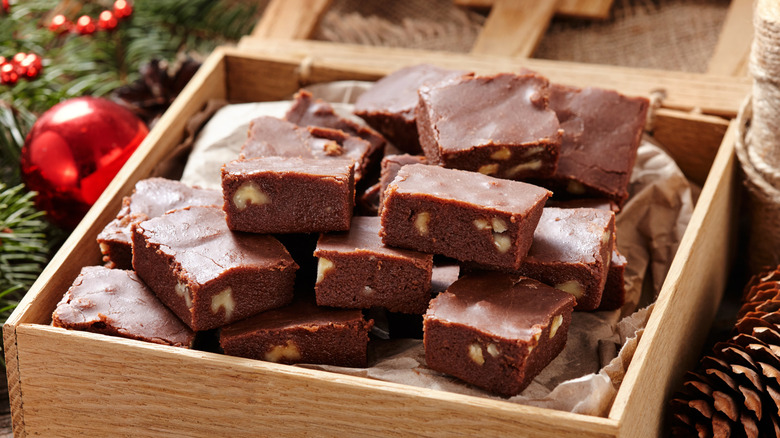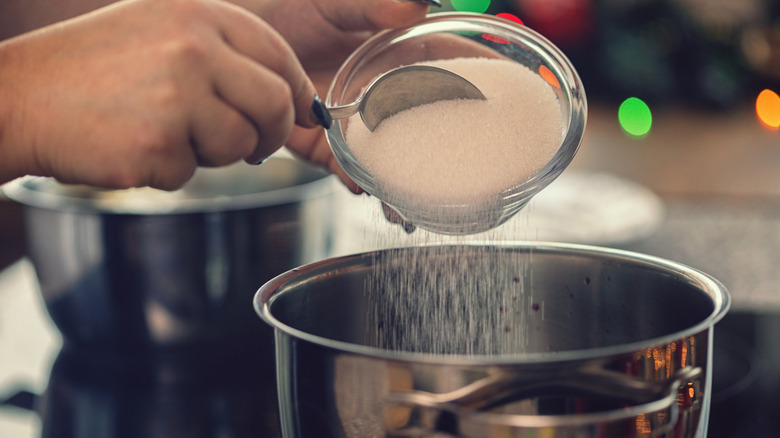The Sugar Mistake That Is Ruining Your Homemade Fudge
Making candy, including the ever-popular old-fashioned fudge, is more of a science than an art. While other types of cooking may give the chef a little leeway, the delicate interplay of sugar with heat demands that you be meticulous about watching your cooking temperature. Err on one side or the other, and you could ruin your homemade fudge.
We asked Preston Stewart, director of chocolate at Onyx Coffee Lab and project manager for Terroir Chocolate, for his expert guidance on this technical process. He explained, "The sugar has to be cooked to a very precise temperature, and you need to use a candy or, better yet, a precision probe thermometer." To achieve a smooth, melt-in-your-mouth texture, it's essential to follow a hard-and-fast temperature rule, heating the mixture to 235 degrees Fahrenheit — no less, no more. Stewart added, "If you overcook or undercook the sugar, the texture will either be stiff or gloopy, respectively."
Inside the sugar cooking process
What's happening here? When you make candy, water evaporates from the mixture as you raise the temperature, changing the ratio of sugar to water and the final texture of the confection. Cooking to 235 degrees Fahrenheit will give you a mixture that's 85% sugar, the "soft-ball stage" used to make fudge. As you raise the heat, you can reach the thresholds required to create caramel, marshmallows, taffy, or, finally, peanut brittle, which is 99% sugar. However, only one of these textures is right for fudge. If you don't want it to be mushy, grainy, or a crumbly mess, you need to stick to the soft-ball number.
To maintain that temperature, it can be helpful to choose the right pot for fudge-making. A thick, heavy pot with a flat bottom will help encourage uniform heat distribution while you're cooking. If you don't have the appropriate equipment to control your sugary concoctions on the stove, it might be best to try one of the other common styles of fudge, such as quick fudge or the kind made with marshmallow fluff. Neither one requires keeping a close eye on the temperature, so they're easy for all skill levels.

